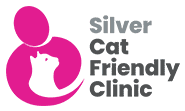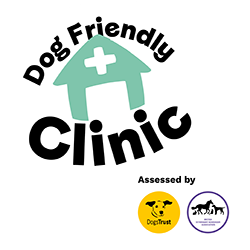Every cancer is different, so every treatment plan needs to be individualised to the patient. The main types of treatment we have for cancer are surgery, radiotherapy and chemotherapy. We may recommend one treatment by itself or a combination of treatments, depending on the type of cancer, the grade and the stage.
As we cannot explain to animals why their treatment is making them feel ill, we do everything that we can to minimise the side effects of any treatment that we give your pet. We try and find the correct balance between treating the cancer and improving your animal’s outcome versus the side effects that come with treating the disease.
If your pet requires surgery you will have the opportunity to discuss this with the Specialist surgeons at Wear Referrals involved in your animal’s care.
Radiotherapy involves using a high-energy beam of x-rays to treat a specific area of the patient. We deliver these with a machine called a linear accelerator. These x-rays cause damage to the cells and ultimately cause the tumour to die. Radiotherapy is very versatile, and we can use it to treat many different types of tumours. We do not currently offer radiotherapy at Wear Referrals but we can organise this treatment should it be necessary.
Radiotherapy does cause damage to the normal tissues around the tumour and will therefore cause some side effects. The severity of these effects will depend on the type of tissue being treated, the radiation dose and the protocol's intensity. One of the most common side effects is damage to the skin, which can look like a bad sunburn. However, the skin heals quickly, meaning that even severe side effects are usually short-lived. Our team will discuss all of the possible side effects with owners before treatment starts.
While radiotherapy is used to treat a single area, chemotherapy is often used when we need a systemic treatment for the patient. This may be because we have a systemic cancer, such as lymphoma, or because we are worried about the distant spread from a solitary aggressive tumour. Chemotherapy literally means ‘treatment with drugs’ and there are many different forms that we can use. People often have very negative perceptions of chemotherapy due to experience from human medicine however one of our main aims in veterinary oncology is to maintain or improve our patient’s quality of life with treatment. We do not tend to use the same high doses of chemotherapy that are used in human oncology which means that we do not see the same severe side effects.
Even though we try very hard not to cause any side effects they are sometimes unavoidable. The most common side effects we can see with every chemotherapy drug are stomach upsets and suppression of the immune system. The latter can make a patient more susceptible to infections although we always monitor the white blood cell count closely with blood tests to make sure this does not happen. We also have a number of medications that we can prescribe that can be used to make the patient feel better such as anti-nausea medication.
One of the most worrying side effects in people is hair loss. However, hair loss is actually quite rare in dogs and cats although we sometimes do see it in poodles and poodle crosses – this is due to their unique hair coat. There are several other side effects that we can potentially see with some of the drugs and again the oncologists discuss these fully with owners prior to treatment. Our chemotherapy information leaflet can be found here.
Although cancer treatments can seem daunting, the primary aim of treatment is always to maintain and improve the quality of life in our patients.






